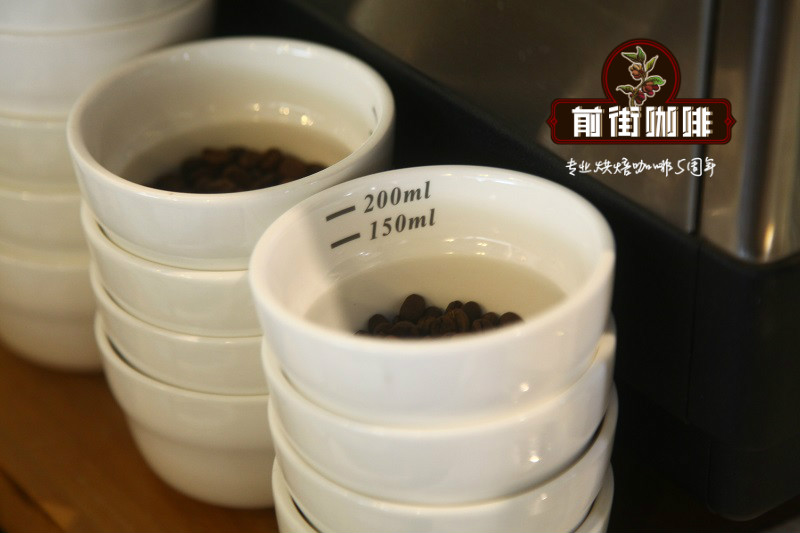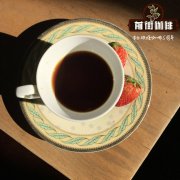Dominica | BARAHONA, CIBAO, ALTURA, CORDILLERA CENTRAL, NEYBA

Professional coffee knowledge exchange more coffee bean information please follow the coffee workshop (Wechat official account cafe_style)
Dominica | what is the flavor difference between BARAHONA, CIBAO, ALTURA, CORDILLERA CENTRAL, NEYBA and VALDESIA?
The Dominican Republic is adjacent to Cuba and Jamaica to the west, and its geographical environment and climate are similar to those of Jamaica. Its coffee cultivation covers four major mountains, where the coffee flavor is different from the general Central and South American coffee flavor. The climate belongs to the tropical marine climate, and the dry and rainy seasons are not obvious. Dominican coffee has a strong connection with society, conserving the environment, maintaining the livelihood of many local families, and allowing farmers to shell coffee beans by hand to ensure that each coffee bean is intact and accurately classified, as well as its quality.
Coffee was introduced to the Spanish-controlled island of Hispaniola in 1735, which is now the island of Dominica. the coffee industry gradually attracted attention from 1822 to 1844. in 1956, many countries began to export coffee from specific producing areas, and coffee farmers began to organize. The Valdesia regional processing plant in the southern mountains was established in 1976 and had 155 members at that time. Later, with the volatility of coffee prices and market uncertainty at the end of the 20th century, many farmers began to grow other cash crops, but some farmers retained coffee cultivation until market prices recovered. They set up their own coffee brand "Cafe de Valdesia" in order to protect the regionality and differentiation of the area. In 1970, coffee exports were getting smaller and smaller, and today only 20% are exported, mainly due to the high domestic demand for coffee, which is about 3 kg per person per year, and consumption exceeds that of the UK. In 2008, Dominican Coffee won the 13th place on the SCAA's Coffee of the year list. Since 2011, more and more exported coffee are seeking machine certification in order to make greater profits.
Some of the more famous producing areas are: CIBAO in the north, whose name means "surrounded by mountains and rocks" in Spanish. In the middle, there are La Vega (La Vega) and Ajuya (Azua). In the south-central part is the province of San Jos é de Ocoa. To the south is the province of Pelavia (Peravia). In the southwest is the province of Baraona (Barahona). As for the coffee that won 18th place in the SCAA cup test in 2008, it was produced in Constanza in the central mountain province of La Vega.
Mainly Arabica, 90% are Tibica, and the other 10% are Kaddura, Bourbon and Kaduai. (it is said to be a descendant of Tibica planted by French officer Dikrou on the island of Martinique. The treatment method is mainly water washing and part of it is insolation. The 26th largest coffee producer in the world, but due to large domestic demand and low external sales, the global market share is only 0.3%.
Dominica coffee features, Dominica soil belongs to limestone and granite, rich in minerals, the soil is different from other Central American producing areas, so the taste of coffee is also very unique.
Baraona AA Dominica Arabica Barahona AA, Dominica
Country: Dominica
Altitude: 1050 m
Grade: AA
Flavor: pine, almonds, drupes, slightly sour and gently sweet
Coffee producing areas of Dominica:
BARAHONA producing area of Balaona province
Bouquet: intense, with hints of chocolate and nuts
Palate: mellow
Acidity: soft
Flavor: with chocolate and forest fruit flavor, bean color is blue, and the bean body is large and oval
Balanced: smooth on the palate with a long finish
Variety: 80% Typica-20% Kaddura (Caturra)
Altitude: 600-1300 m above sea level
Harvest period: October to February
CIBAO production area of Xibao District:
Aroma: a hint of cocoa
Palate: mellow
Acidity: obvious
Flavor: strong taste, with cereal flavor
Balance: thick
Variety: 90% Typica-10% Kaddura (Caturra)
Altitude: 400-800m above sea level
Harvest period: September to December
CIBAO ALTURA producing area:
Aroma: nutty and floral aromas
Palate: medium
Acidity: meticulous and elegant
Flavor: nuts and wildflowers
Balance: moderate fruit acid
Bean color: turquoise
Variety: 30% Tibica (Typica)-70% Kaddura (Caturra)
Altitude: 600-1500 m above sea level
Harvest period: October to May
CORDILLERA CENTRAL producing areas in the central mountains:
Bouquet: aromas of red berries, such as raspberry, raspberry and strawberry
Palate: medium
Acidity: strong and bright
Flavor: cranberry, citrus, floral aromas
Equilibrium: slight acid
Variety: 30% Typica-65% Kaddura (Caturra)-5% Catua í)
Altitude: 600-1500 m above sea level
Harvest period: November to May
NEYBA producing area in Neiba:
Bouquet: a hint of citrus and lemongrass
Palate: medium
Acidity: sweet and soft
Flavor: citrus flavor
Equilibrium: slight acid
Variety: 50% Tibica (Typica)-50% Kaddura (Caturra)
Altitude: 700-1400 m above sea level
Harvest period: November to February
VALDESIA producing area:
Aroma: chocolate and nutty
Palate: medium
Acidity: soft
Flavor: sweet taste
Balance: equilibrium and consistency
Variety: 40% Typica-60% Kaddura (Caturra)
Altitude: 500-1100 m above sea level
Harvest period: October to February
Coffee certification in Dominica:
The Dominican Coffee Commission regulates certification in accordance with international standards ISO-17025, 17065 and 17020
And use the most advanced equipment and professional evaluation team.
Many international permanent certifications, such as organic and fair trade, are one of the features of multinational coffee products.
Under the vigorous promotion of multinational coffee brands, such as appellations of origin, sustainable labels and coffee from major high-quality producing areas.
Multinational coffee has developed to an unprecedented level.
Filter cup: Hario V60
Water temperature: 90 degrees
Degree of grinding: small Fuji 3.5
Cooking methods: the ratio of water to powder is 1:15, 15g powder, the first injection of 25g water, 25 s steaming, the second injection to 120g water cut off, waiting for the powder bed water to half and then water injection, slow water injection until 225g water, extraction time about 2:00
Analysis: using three-stage brewing to clarify the flavor of the front, middle and back of the coffee. Because V60 has many ribs and the drainage speed is fast, it can prolong the extraction time when the water is cut off.
Important Notice :
前街咖啡 FrontStreet Coffee has moved to new addredd:
FrontStreet Coffee Address: 315,Donghua East Road,GuangZhou
Tel:020 38364473
- Prev

The difference between espresso and American coffee? What is the concept of espresso? Front street Italian recipe?
Professional coffee knowledge exchange more coffee bean information please pay attention to the coffee workshop (Wechat official account cafe_style) the difference between espresso and American coffee? What is the concept of condensed espresso? Front street Italian recipe? Espresso can be divided into single (English: Single espresso; meaning: Espresso solo, usually omitted as espresso) and double (English: Double e)
- Next

The flavor of cheetah SHB in the traditional washing of the Sigua Tepec Cooperative in central Honduras?
Professional coffee knowledge exchange more coffee bean information please follow the coffee workshop (Wechat official account cafe_style) Central Honduras production area | Seguatpec cooperative cheetah SHB flavor? There are 280000 hectares of coffee plantations in Honduras, dominated by small coffee merchants, most of which are less than 3.5ha, accounting for 60 per cent of Hongguo's production. In the coffee
Related
- Detailed explanation of Jadeite planting Land in Panamanian Jadeite Manor introduction to the grading system of Jadeite competitive bidding, Red bid, Green bid and Rose Summer
- Story of Coffee planting in Brenka region of Costa Rica Stonehenge Manor anaerobic heavy honey treatment of flavor mouth
- What's on the barrel of Blue Mountain Coffee beans?
- Can American coffee also pull flowers? How to use hot American style to pull out a good-looking pattern?
- Can you make a cold extract with coffee beans? What is the right proportion for cold-extracted coffee formula?
- Indonesian PWN Gold Mandrine Coffee Origin Features Flavor How to Chong? Mandolin coffee is American.
- A brief introduction to the flavor characteristics of Brazilian yellow bourbon coffee beans
- What is the effect of different water quality on the flavor of cold-extracted coffee? What kind of water is best for brewing coffee?
- Why do you think of Rose Summer whenever you mention Panamanian coffee?
- Introduction to the characteristics of authentic blue mountain coffee bean producing areas? What is the CIB Coffee Authority in Jamaica?

